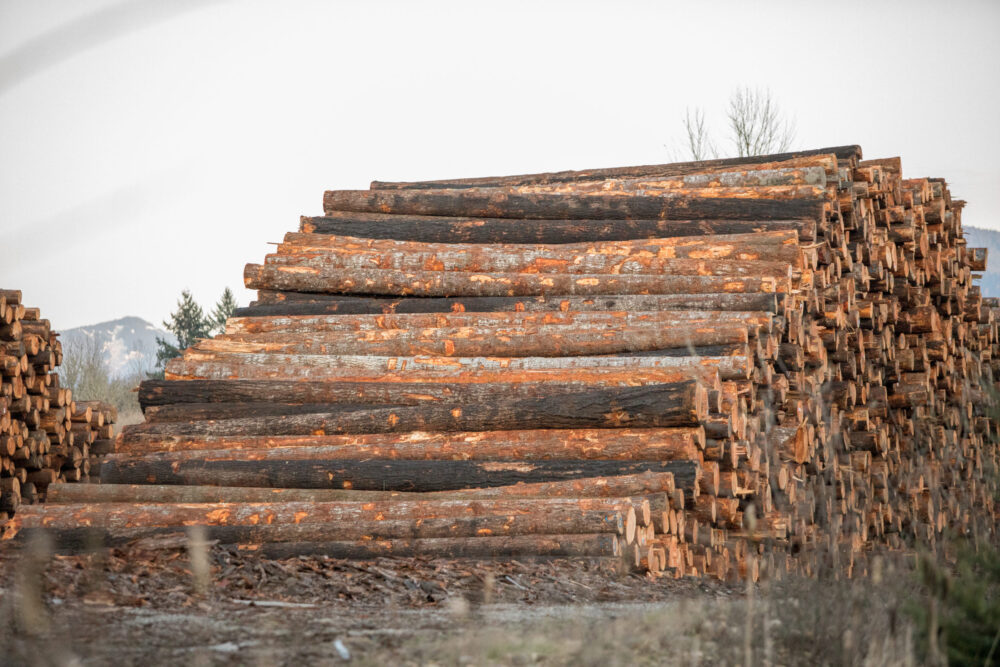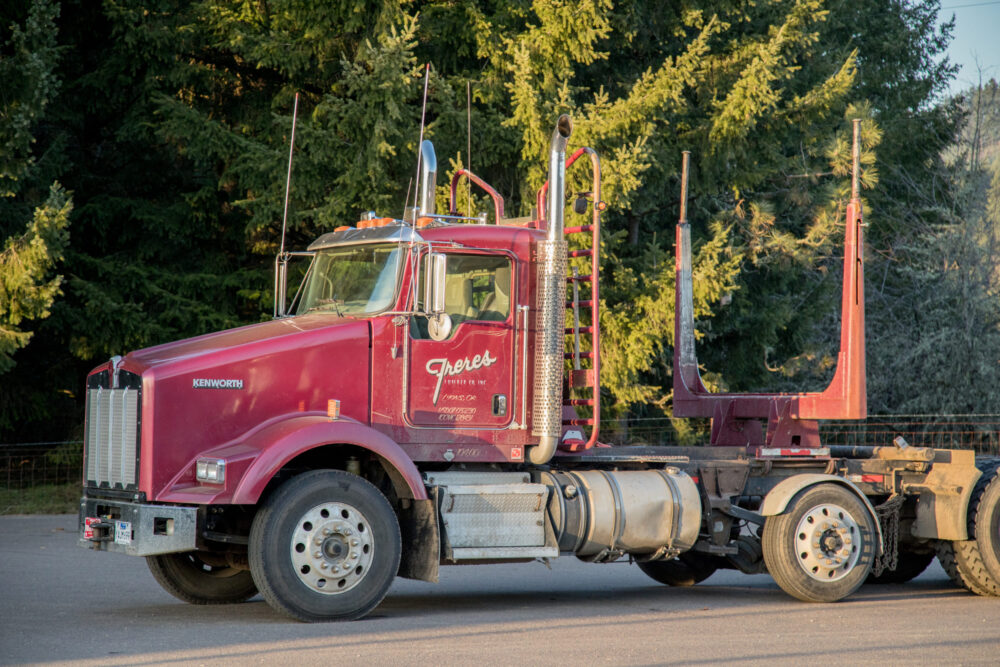The Freres Timber Department has come out of the gates at full speed through the short days and seemingly short winter – wrapping up planting trees since last October, burning slash piles, finishing salvage logging on our own lands, working on salvage timber sales under contract, chasing upcoming timber sales to buy for future logs, and keeping a daily log flow into the mill. All this while curtailing log inventory to make room for construction on the new log crane.
While salvage logging from the 2020 fires is all but finished on company lands, we are active on three federal (Bureau of Land Management) salvage timber sales. There are more than 30 million feet of “salvage” burnt timber sales coming up over the next four months, but the extreme deterioration of some species may make them unviable .
There is a very small window to salvage logs after a catastrophic wildfire such as Beachie Creek, Lionshead, Archie or Holiday. There are signs of sap jjrot, stain, bark beetles/wood borers in the Douglas Fir and any whitewoods such as Hemlock, Noble Fir and Grand Fir.
It’s grim to physically see the sheer amount of timber going to waste from the 2020 fires on federal lands (United States Forest Service). Oregon contains more than 30 million acres of forestland (nearly half the state), of which more than 60 percent is owned by the federal government, who has done very little to salvage logs due to the extreme political issues around forest management and lawsuits by environmental groups – but mostly bureaucratic inefficiency.

With the lack of local “green” timber sales from Oregon Department of Forestry (state), USFS (federal), Bureau of Land Management (federal) and private, we are forced to expand our working circle in all directions for future logs – pushing to the extreme northern and southern parts of the state, in an already very competitive log market.
While volatile winter weather impacts log flow; the tight labor market, rapidly rising fuel cost along with high priced parts, oil, hoses, fittings, major breakdowns or regular maintenance on equipment all influence log supply in some way. Douglas Fir log prices have taken a surge that I have never seen before this first quarter.
We continue to face conservation groups and judges halting federal harvest plans on the Willamette National Forest in burned areas. The new legislative changes to the State Forest Practice Laws regarding expanded buffers for streams and new standards for forest roads – regarding road design, maintenance, culvert replacement and fish migration – known as the Private Forest Accord, Senate Bill 1501, was approved by the Senate at the time of this writing.
This PFA statute will create negative impacts on our company by losing land and timber value from wider riparian buffers. Plus, higher costs for road construction and maintenance which really is tormenting after losing more than 30 percent of our total timber holdings from wildfire over a three-day weekend.
Support for this deal is not unanimous in the timber industry. Critics, including myself, argue that it complicates forest management, excludes excessive amounts of land from harvesting, and was developed without public input.

The draft Environmental Impact Statement for the Western Oregon State Forests Habitat Conservation Plan (HCP) was recently released in a 1,850-page document. In the end, this will halt most timber harvesting and road construction in Clatsop, Tillamook and Santiam State Forests, and will affect Benton, Clackamas, Clatsop, Columbia, Coos, Curry, Douglas, Jackson, Josephine, Lane, Lincoln, Linn, Marion, Polk, Tillamook, Washington and Yamhill counties.
The timber industry buzzwords are as strong as ever in 2022. We deal with the constant bombardment of local vs. federal, conservation vs. logging, economic vs. cultural, rural economies, ecosystems, wildlife habitat, climate change, wildfire potential, forest health, critical habitat, and carbon storage. The list goes on.
In our industry there will always be technological shifts, social changes, forest health concerns, issues with sustainable and effective management, changing policies and markets – but if it was easy, everyone would do what we do!
Subscribe
We’ll send you a notification when a new story has been posted. It’s the easiest way to stay in the know.